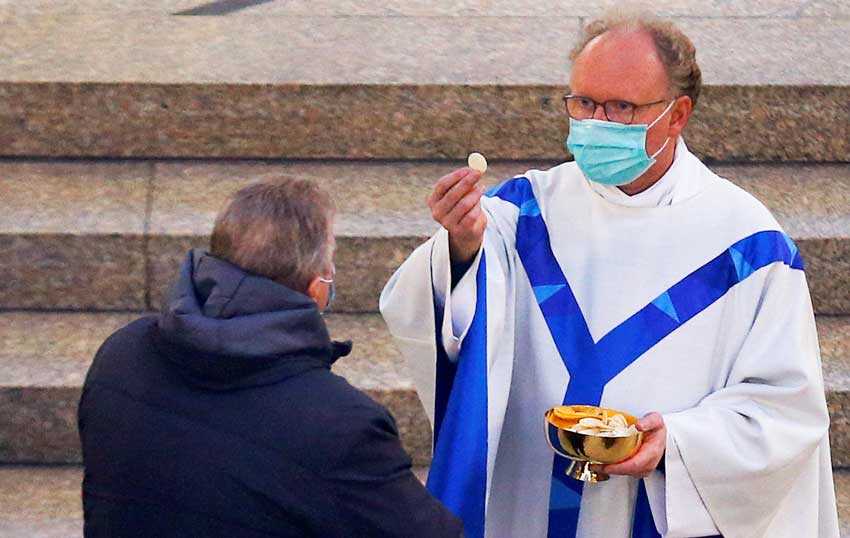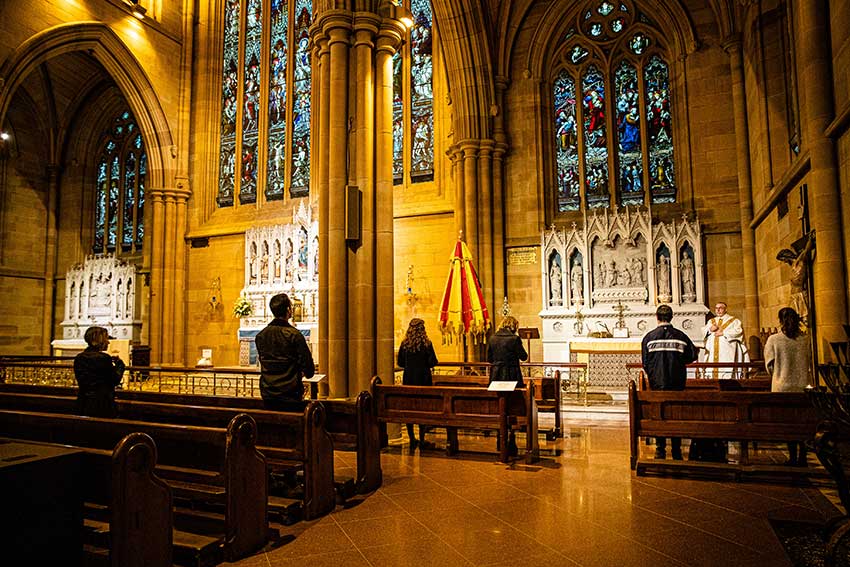
During the recent church lockdowns, the US-based Thomistic Institute produced a set of guidelines showing how to distribute the sacraments safely during a pandemic like COVID-19.
The Thomistic Institute is part of the Dominican House of Studies in Washington, DC.
When the pandemic began, some US bishops asked them to put together a working group of infectious disease experts, medical professionals, scientists, and Catholic theologians.
The problem they had to solve was: how can Catholic sacraments be provided in a pandemic, while meeting the current standards issued by the World Health Organisation and the US Centres for Disease Control? The group didn’t waste time.
On 6 April 2020, they produced their first set of guidelines – how to hear Confessions and administer Anointing of the Sick safely.
This covered every possible situation for people who are sick and well, in hospital and at home.
On 7 May, guidelines appeared for how to restart public Masses safely. Then on 11 June, how to baptise safely, and finally on 14 June, Holy Orders and Confirmation. (There’s nothing about Marriage yet, so you’ll have to stay engaged a bit longer.)
The team is made up of a core of five priest-theologians and two medical doctors, with contributions from a larger group of four doctors and biomedical scientists, and three senior clergy.
It includes Dr Timothy Flanigan, professor of medicine at Brown University, and a leading infectious-disease specialist who was involved in the 2014 Ebola outbreak in Africa.
They state, “With proper safeguards to prevent infection and integrating the scientific guidance of public health authorities …, it is possible to provide the Mass and the sacraments to the faithful in this period.”
The guidelines meet all the Church’s requirements for the valid and licit celebration of the Mass and other Sacraments, so there is no need for any exciting local improvisations.

Interestingly, the guidelines don’t recommend a wholesale dispensation from the Sunday Mass obligation, because of very real concerns that Catholics will stop going to Mass altogether.
The guidelines cover the distribution of Holy Communion both inside and outside of Mass, and they state that Holy Communion can be safely received on the tongue if the person wishes.
These guidelines also mean that there is no reason for Catholics to be deprived of the sacraments in any future pandemic, even with church closures.
So are they working? Some bishops in the US have used the guidelines to implement diocesan social distancing, hand hygiene, mask-wearing, and no congregational singing.
So far, there has been no reported church-based COVID-19 transmission in these dioceses.
By contrast, churches where the guidelines were not followed – such as in San Francisco – have reported COVID-19 outbreaks, which in turn triggered church closures again.
The team concluded, “In a time like this, it is even more important that the faithful be able to come to Church and receive Holy Communion.”
You can read the guidelines for yourself here: https://thomisticinstitute.org/covid-sacraments
Better still, let your local bishop know about them?
